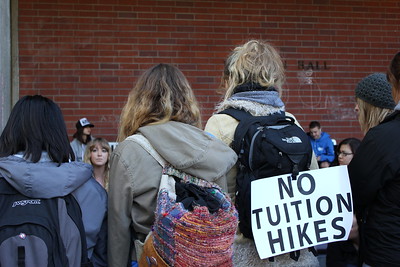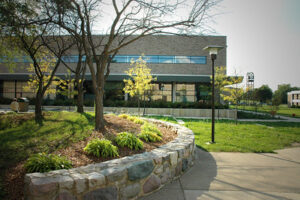If Washtenaw Community College needs another reason to increase its maintenance budget to the recognized industry standard of 2% of the current replacement value ($7.9M), here is it. Last week, bond ratings firm Moody’s released a report that suggests that colleges and universities in the US will need somewhere between $750B and $950B in neglected maintenance and capital funding over the next decade.
The report might be welcome news to investors but should be a red-flag warning to just about everyone else. In the report, Moody’s reports that of about 500 colleges and universities that the firm provides ratings for, at least 30% with crappy credit ratings will “face hard capital strategy choices.”
That’s another way of saying that these institutions could find themselves being consumed by their capital costs. Neglected maintenance is the largest segment of an institution’s capital costs. Although Moody’s refers to this in the report as a “hidden danger,” it’s really more like credit card debt or a payday loan.
Neglected maintenance costs continue to rise at an alarming rate as long as the institution continues to neglect them. At some point, it becomes more cost effective to replace the building than it does to repair it. But that’s not exactly a win, either.
The rising cost of construction materials, as well as the high cost of capital grows worse for institutions that have poor credit ratings. The cost of borrowing becomes onerous. At that point, not only has the institution lost the building, but also it has lost its ability to fund its replacement.
Neglecting maintenance as a replacement strategy is always poor practice; it may also topple higher education institutions that wait too long to act.
Community colleges don’t have to fund neglected maintenance costs
So, which institutions are most at risk? According to Moody’s, those with budgetary problems, low enrollment growth, and those with limited capacity to take on new debts will most likely feel the pinch of neglected maintenance over time.
Community colleges have a lower margin than most. Using the university strategy of passing capital costs onto students via tuition and fee increases will lead community colleges to the same place that universities have found themselves in: unaffordable for most students in their target populations.
At the same time, colleges and universities that neglect the conditions at their facilities place themselves at risk of losing enrollment.
Community colleges don’t really have to fund their capital projects this way. In Michigan, community colleges can turn to the voters to seek a special tax to fund capital costs. That keeps tuition low for the students – which is why this approach is available to community colleges – and it enables the college to have updated facilities.
To put it bluntly, not seeking taxpayer assistance to fund capital project costs is institutional suicide. Trustees would be well advised to avoid raising attendance costs unnecessarily by transferring the institution’s capital costs to its students.
Photo Credit: deardelirious , via Flickr















